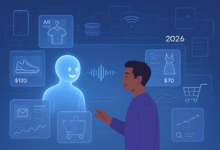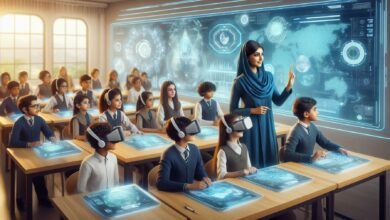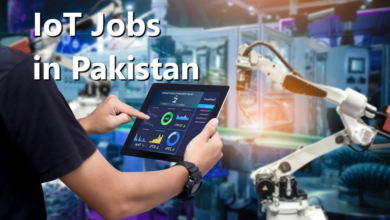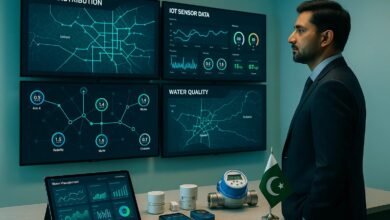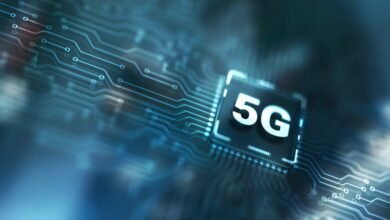IoT vs AI – What’s the Difference and Why It Matters in 2025
Discover the key differences between IoT and AI, and why their roles matter more than ever in 2025. Learn how these technologies work individually and together to transform industries.

In the evolving digital landscape, two terms dominate conversations across industries: Internet of Things (IoT) and Artificial Intelligence (AI). These technologies are revolutionizing how we interact with devices, analyze data, and make decisions. Yet, despite their frequent pairing, IoT and AI are fundamentally different. Understanding these differences—and how they work together—is crucial in 2025 as businesses seek to innovate, streamline operations, and maintain a competitive edge.
Understanding the Internet of Things (IoT)
The Internet of Things (IoT) refers to a network of interconnected physical devices that collect and exchange data via the internet. These devices range from household smart appliances and wearable health monitors to industrial machines and autonomous vehicles. Each device is embedded with sensors, software, and connectivity modules, enabling it to communicate with other devices or centralized systems without human intervention.
In 2025, the IoT ecosystem has become more advanced, with billions of devices transmitting real-time data. The primary function of IoT is data collection. Sensors monitor temperature, location, movement, and other metrics, relaying this information to platforms for analysis. This raw data on its own, however, lacks actionable value unless paired with systems that can interpret it—enter AI.
Exploring Artificial Intelligence (AI)
Artificial intelligence (AI) refers to the simulation of human intelligence in machines. These systems are designed to think, learn, and adapt based on the data they receive. AI encompasses a wide array of subfields, including machine learning (ML), natural language processing (NLP), computer vision, and predictive analytics.
In 2025, AI is no longer confined to research labs. It powers virtual assistants, recommends products, detects fraud, and even diagnoses diseases. Unlike IoT, which focuses on data generation, AI is focused on data interpretation and decision-making. AI algorithms can identify patterns, forecast trends, and provide insights that would be impossible or inefficient for humans to achieve alone.
Key Differences Between IoT and AI
Despite their symbiotic potential, IoT and AI serve different core functions:
-
Functionality: IoT is about connecting devices and transmitting data. AI is about analyzing data and making decisions or predictions.
-
Purpose: IoT’s goal is to monitor and report, while AI aims to learn and act.
-
Components: IoT requires hardware (sensors, devices) and network connectivity. AI relies on algorithms, computing power, and large datasets.
-
Independence: IoT devices alone don’t “think.” They simply collect and communicate. AI, on the other hand, can learn from data, making it more autonomous.
These differences define how and where each technology is applied. However, the most powerful use cases often arise when IoT and AI are integrated.
Why IoT and AI Work Better Together
When combined, IoT and AI create intelligent systems capable of real-time decision-making. This fusion is known as AIoT (Artificial Intelligence of Things). In an AIoT ecosystem, IoT provides the data, and AI turns that data into actionable insights. This enables businesses to automate complex tasks, improve efficiency, and personalize user experiences.
For instance, in smart manufacturing, IoT sensors can detect equipment wear and send alerts. AI can analyze these alerts to predict equipment failure, recommend maintenance, and even schedule repairs autonomously. This prevents costly downtime and extends asset life.
In healthcare, wearable IoT devices monitor patients’ vitals in real time. AI processes this data to detect anomalies, predict health risks, and suggest treatment plans, often before a human doctor can respond.
Use Cases Across Industries in 2025
The convergence of IoT and AI is transforming every sector. Here are some of the most prominent applications in 2025:
Smart Cities
IoT-powered infrastructure is embedded in traffic lights, waste systems, and public transportation. AI algorithms optimize traffic flow, reduce energy consumption, and predict maintenance needs. Together, they help cities become more sustainable and responsive.
Healthcare and Wearables
IoT wearables continuously track heart rate, oxygen levels, and sleep patterns. AI uses this data to detect early signs of disease, personalize health recommendations, and reduce hospital readmission rates. In 2025, remote patient monitoring is a norm rather than a trend.
Retail and Customer Experience
Retailers use IoT beacons to track customer movements and shopping behaviors in-store. AI analyzes this data to optimize store layouts, personalize promotions, and enhance customer satisfaction. AI chatbots further improve service by handling customer inquiries in real-time.
Agriculture
Smart farming systems employ IoT sensors to monitor soil moisture, weather conditions, and crop health. AI models use this information to optimize irrigation, predict crop yields, and detect pest outbreaks. This leads to higher efficiency and sustainable farming.
Finance and Banking
AI helps detect fraud and predict market movements, while IoT improves the security of digital banking through biometric devices and mobile sensors. In 2025, AI-driven financial advisors use real-time IoT data to offer tailored investment guidance.
Security and Ethical Considerations
As IoT and AI become more embedded in daily life, security and privacy take center stage. IoT devices often operate on limited resources and can lack robust encryption, making them vulnerable to cyberattacks. Meanwhile, AI systems can unintentionally propagate biases or make decisions that are difficult to audit.
To mitigate these issues, businesses in 2025 are adopting zero-trust security models, implementing AI explainability frameworks, and complying with strict data protection regulations such as GDPR and CCPA. Security by design is becoming a baseline requirement rather than an afterthought.
Challenges of Integrating IoT and AI
Despite their benefits, integrating IoT and AI isn’t without hurdles:
-
Data Overload: IoT devices generate enormous volumes of data, much of it unstructured. Without AI, much of this data is underutilized.
-
Interoperability: Devices from different manufacturers may not communicate well. Standardization remains a challenge.
-
Latency: Processing data in real-time requires edge computing, which is still evolving.
-
Cost: Deploying and maintaining AIoT systems can be expensive, especially for small businesses.
-
Skill Gap: Skilled professionals who understand both AI and IoT are in high demand but short supply.
Companies must strategize carefully, weighing ROI and scalability before large-scale adoption.
The Future Outlook: What to Expect in the Next Five Years
By 2030, the boundaries between IoT and AI will blur even further. With 5G, quantum computing, and edge AI accelerating growth, the possibilities are immense. Self-learning IoT networks, predictive logistics, autonomous drones, and hyper-personalized digital environments will become commonplace.
However, success in this evolving landscape will depend on interdisciplinary innovation, public-private partnerships, and strong governance. The ability to merge connectivity (IoT) with intelligence (AI) will define the digital leaders of tomorrow.
Why Understanding the Difference Matters in 2025
So, why does the distinction between IoT and AI matter today? Because it empowers stakeholders—from developers and CEOs to policymakers and consumers—to make informed decisions.
-
Strategic Planning: Knowing the capabilities of each technology helps businesses plan realistic roadmaps and allocate budgets wisely.
-
Talent Acquisition: Hiring for AI and IoT requires distinct skill sets. Understanding the difference ensures effective team building.
-
Risk Management: Security, ethical, and regulatory challenges differ between the two, requiring targeted solutions.
-
Customer Engagement: Businesses that clearly understand and communicate their tech offerings can build trust and improve adoption.
As organizations in 2025 strive to stay relevant, blending IoT’s connectivity with AI’s intelligence becomes not just an opportunity but a necessity.
Conclusion
While IoT and AI often work in tandem, they are fundamentally different technologies. IoT focuses on connecting and collecting, while AI is about understanding and acting. Their combined potential is vast, enabling smarter systems across every industry. In 2025, understanding their unique roles—and how they complement each other—will be key to leveraging the next wave of digital transformation.
Whether you’re a tech enthusiast, business leader, or everyday consumer, knowing the difference between IoT and AI isn’t just academic. It’s the foundation of understanding how the world around you is changing—and how you can harness that change to your advantage.

